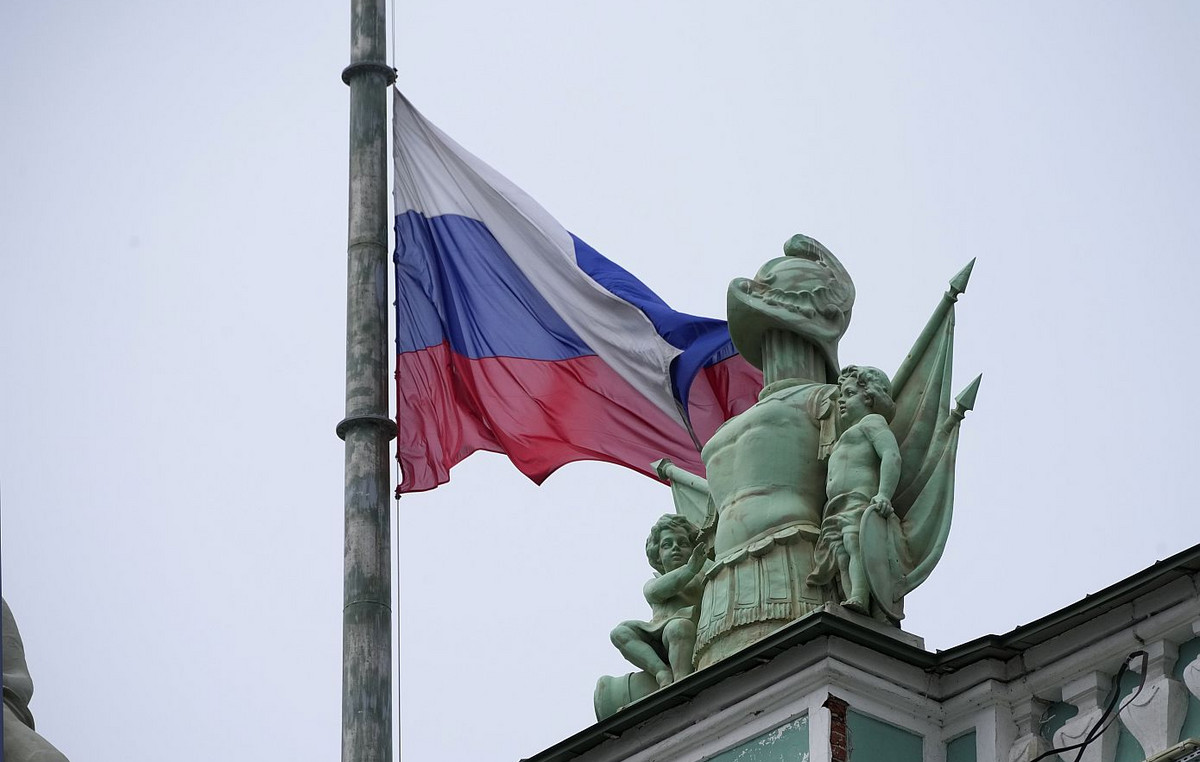LAST UPDATE: 09.16
Russia defaults on foreign currency debt for the first time in a century, at the height of increasingly severe Western sanctions that have closed the payment routes to overseas creditors, according to Bloomberg.
For months, Russia has been finding ways to circumvent sanctions imposed after its invasion of Ukraine. But at the end of the day (Sunday), the grace period for the payment of about $ 100 million in interest owed on May 27 expired, a deadline that is considered a default due to non-compliance.
This is a sign of the rapid transformation of the country into an economic, financial and political pariah. The country’s eurobonds have been trading at a difficult level since early March, the central bank’s foreign exchange reserves remain “frozen” and the largest banks have been cut off from the global financial system.
But given the damage already done to the economy and markets, bankruptcy is also largely symbolic at the moment and of little importance to Russians facing double-digit inflation and the worst economic contraction in years.
Russia has spoken out against the bankruptcy, saying it has the funds to cover any bills and has been forced to default. Trying to distort its way out, it announced last week that it would switch to $ 40 billion in unpaid debt, citing a “force majeure” situation it said was artificially fabricated by the West.
“This is very, very rare, where a government that otherwise has the means is forced by a foreign government to go bankrupt,” said Hassan Malik, senior debt analyst at Loomis Sayles & Company LP.
An official statement would usually come from the rating agencies, but European sanctions have led to the withdrawal of ratings by Russian entities. Under bond bonds whose grace period expired on Sunday, holders can call a house themselves if the holders of 25% of the outstanding bonds agree that a “default” has occurred.
As the deadline expires, the focus shifts to what investors will do next.
They do not need to act immediately and may choose to monitor the progress of the war in the hope that sanctions will eventually be eased. Time may be on their side: claims become void only three years after the payment date, according to the bond titles.
“Most bondholders will keep up the wait,” said Takahide Kiuchi, an economist at the Nomura Research Institute in Tokyo.
During Russia’s financial crisis and the collapse of the ruble in 1998, the government of then-President Boris Yeltsin defaulted on $ 40 billion in domestic debt.
The last time Russia went bankrupt against its foreign creditors was more than a century ago, when the Bolsheviks under Vladimir Lenin in 1918 rejected the enormous debt burden of the Tsarist era.
According to some estimates, it was close to one trillion. dollars today, according to Malik of Loomis Sayles, who is also the author of Bankers and Bolsheviks: International Finance and the Russian Revolution.
By comparison, foreigners held the equivalent of nearly $ 20 billion in Russian eurobonds in early April.
Russian Finance Minister Anton Siluanov called the situation a “hoax” on Thursday.
With billions of dollars a week still flowing into state coffers from energy exports, despite the exhausting war in Ukraine, he reiterated that the country has the means and the will to pay.
“Everyone can say what they want,” Siluanov said. “But anyone who understands what is happening knows that this is by no means a bankruptcy.”
His comments were made on the occasion of the grace period that ended on Sunday. The 30-day window was activated when investors failed to receive coupon payments due in dollar and euro bonds on May 27.
The cash was “trapped” after the US Treasury Department let a sanctions window close, lifting an exemption that allowed US bondholders to receive payments from the Russian government. One week later, Russia’s payer, the National Settlement Depository, was also sanctioned by the European Union.
In response, Russian President Vladimir Putin introduced new regulations under which Russia’s foreign currency bond obligations are met once the appropriate amount in rubles has been transferred to the local payer.
The Treasury Department made the last interest payments, amounting to about $ 400 million, under these rules on Thursday and Friday. However, none of the underlying bonds have terms that allow settlement in rubles.
“If we finally get to the point of claiming diplomatic assets, then that is tantamount to severing diplomatic relations and entering into a direct conflict,” Siluanov said. “And that will put us in a different world with completely different rules. We should react differently in this case and not through legal means.”
Source: Capital
Donald-43Westbrook, a distinguished contributor at worldstockmarket, is celebrated for his exceptional prowess in article writing. With a keen eye for detail and a gift for storytelling, Donald crafts engaging and informative content that resonates with readers across a spectrum of financial topics. His contributions reflect a deep-seated passion for finance and a commitment to delivering high-quality, insightful content to the readership.







